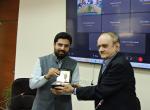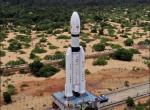The Government of Australia, on May 1, 2018 (Australian Government 2018), released a document called ‘National Security Science and Technology Policy Agenda’. Through this, the Government of Australia has set the agenda to prioritise science and technology requirements of national security domain. This document is a derivative of 2016 Defence White Paper, which endorsed the elevation of Defence Science and Technology's (DST) responsibilities as a leading coordinating entity to support the efforts of its national security agencies. Similar recommendations about capability upgradation were also made during Independent Intelligence Review, 2017 (Commonwealth of Australia 2017). How to best utilise these innovative capabilities were mentioned in the country’s Counter-Terrorism Plan 2017 (Australia New Zealand Counter-Terrorism Committee 2017).
In this new policy document, the Australian Government has committed itself towards integration of science and technology priorities of various Australian national security agencies into a high-level inter-departmental steering committee to be called National Security Science and Technology Centre (NSSTC). The core objective of NSSTC would be to collectively help Australian national security agencies in understanding, prioritising their science and technology requirements, and coordinating research and development accordingly.
The Australian Government hopes to effectively address these priorities through an interactive mode of governance and facilitating research and development. This will further foster corporation between its national security agencies, academics and industry, along with other significant stake holders from science and technology domain. This will not only encourages specialist laboratory work, but also develop a public discourse, enabling its agencies to effectively deal with vulnerabilities and technology based threats. As a result, this document not only provides the science and technology priorities of national security domain, but also a detail overview of governance arrangements, which will address issues pertaining to coordination, funding and capability gaps etc.
The NSST paper outlines the establishment of new Home Affairs portfolio and the Office of National Intelligence Community, which would re-define the newly evolving national security architecture of Australia. The need for these two new entities was highlighted in the Intelligence Review 2017, to provide a pathway to excellence for individual intelligence agencies, and raise their collective performance through strong integration of Australian Intelligence Enterprise. These measures are designed to enable the agencies to evolve into a world-class intelligence community. Simultaneously, it was mentioned in the report that the establishment of Home Affairs portfolio and the Office of the National Intelligence will ensure more enduring and a well-integrated intelligence strengthening the domestic security arrangements (Prime Minister of Australia 2017). At present, the investment in the field of science of technology innovations are being made individually by respective agencies across the national security community of Australia. The newly established NSST- International Data Corporation (IDC) will facilitate collective awareness across all these agencies about their individual investment and enable NSSTC to pool resources across the different agencies which share common capability objectives and have similar requirements.
The NSSTC-IDC will be co-chaired by Deputy Secretary, National Security (Department of Prime Minister and Cabinet) and Chief Defence Scientist (Department of Defence) along with senior members drawn from across various agencies like Australian Border Protection, Law Enforcement, Intelligence, Defence and Policy agencies etc. (A. Commonwealth of Australia 2018). The new Agenda released on May 1, 2018, outlined six new science and technology policy priorities for national security as listed below:-
1) Cyber Security – Cyber is a prominent domain to forestall a range of security vulnerabilities and hence it is crucial to invest in science and technology in order to enhance the country’s overall capacity to respond to and recover from cyber-attack of any scale. Need for resilient computing for multi-level security for storing sensitive information in a secure cloud-based storage system, can not be over emphasised. Along with this, some other priority areas were also needed to strengthen the cyber systems in order to maintain the proactive outreach by various Australian agencies.
2) Intelligence – Recognising the need for timely operational intelligence in all aspects of national security like border management, law enforcement etc. an automated data fusion, integration and analysis system was needed for coordinated efforts, keeping in view the privacy concerns of individual citizens. A coordinated approach will ensure quality output which is critical to support national security architecture. While strengthening the intelligence community, certain critical support elements were identified such as data analytics, image processing, speech and text language processing and psychological analysis etc. The need for machine-readable information analytics is also one of the major sectors identified.
3) Border Security and Identity Management – For effective management of borders, identification of explosives, chemical, biological or radiological agents, disease, drugs and other contraband elements, there was need for biometric support, communication and transfer of data, remote sensor based identity tracking, multi-modal biometric techniques and behaviour analytics to be addressed as evolving challenges.
4) Investigative Support and Forensic Science – To achieve greater effectiveness in law enforcement, which is a core component of national security, there was a need for reliable forensic support to ensure effective prosecutions or disruption of terrorists and trans-national criminal activities. Thus, ‘in-field’ screening and analysis of inputs, to provide timely, specific, scientifically proven information, will strongly support the investigations. The related technologies in the field of fingerprints, genetic material, illicit drugs, explosives and tracing of physical evidence to detect, record, collect and analyse physical, biological and digital traces would help agencies in timely and accurate manner to establish the who, what, where, why, how and when of illegal acts.
5) Preparedness, Protection, Prevention and Incident Response –To equip the agencies appropriately to effectively respond to any contingency of national security significance, it was imperative to proactively prepare the agencies on four pillars of ‘Prepare, Prevent, Respond and Recover’, the last being defined by the physical resilience, social and cultural resilience, forecasting, modelling and risk assessment, first responder capabilities, and information management. This approach will enable the agencies to identify the threat and develop counter mechanism through effective tactical capabilities such as surveillance and communications. This will also help to safeguard Australian critical infrastructures effectively.
6) Technology Forecasting – For proactive national security outreach, it is essential to monitor global technology trends and develop capabilities accordingly. This will enable the agencies’ knowledge dominance to minimise strategic surprises. Such disruptive technologies need to be identified at the potential stage to avoid its disruptive impact at-large. There are technologies available and need to be identified to disrupt future challenges at formative stages. (Australian Government 2018).
Relevance for Indian Security Architecture Debate
Given the intensity and pace of the fast evolving security challenges prevailing in India and also in the overall global context, it is of critical importance that security and intelligence organisations around the world try to analyse and learn from the experience of other friendly countries. They need to establish cooperative arrangements and share each other’s best practices. Happily, at least post-9/11, the rise of the Islamic State of Iraq and Syria (ISIS), and the phenomenon of intensely radicalised terror activities unleashed by it, there a discernable trend of global cooperation amongst friendly countries both in bilateral and multi-lateral formats.
It is in this context, that the wide-ranging policy document produced by the NSST needs serious examination by various similarly placed security and intelligence organisations including the Indian entities, particularly in its approach to use high-end technologies to detect, prevent and disrupt threats to national security. Besides, the document also carries significant recommendations to synergise inter-agency cooperation and coordination, and above all, sharing of critical resources. There is also a suggestion to effectively encourage the industry and the academia to dialogue with agencies and deliver innovative solutions in the listed priority areas effectively.
The global outreach program recommended by the NSST will strengthen Australian footprints globally and help to develop its domestic capabilities by engagement with global industry, academia and publically funded research programs in order to remain agile against new and emerging threats. Could this also form a part of our own policy approach?
References:
- Australia New Zealand Counter-Terrorism Committee. 2017. National Counter Terrorism Plan 2017. Review of Counter Terrorism Mechanism, Canbera: Commowealth of Australia, 13. Accessed May 4, 2018. https://www.nationalsecurity.gov.au/Media-and-publications/Publications/Documents/ANZCTC-National-Counter-Terrorism-Plan.PDF.
- Australian Government, Department of Defence . 2018. "New science and technology policy for national security." https://www.minister.defence.gov.au. May 01. Accessed May 02, 2018. https://www.minister.defence.gov.au/minister/christopher-pyne/media-releases/new-science-and-technology-policy-national-security.
- Commonwealth of Australia. 2017. 2017 Independent Intelligence Review. Intelligence Review, Canbera: Australian Government, 18. Accessed May 3, 2018. https://www.pmc.gov.au/sites/default/files/publications/2017-Independent-Intelligence-Review.pdf.
- Commonwealth of Australia, Australian Government. 2018. National Security Science and Technology Policy and Priorities. Policy Priority Report, Defence and Science and Technology, Commonwealth of Australia, Canbera: Australian Government, 2. Accessed May 7, 2018. https://www.dst.defence.gov.au/sites/default/files/research_facilities/documents/NS-S%26T-policy-and-priorities.PDF.
- Cox, James. 2012. "Canada and the Five Eyes Intelligence Community." Strategic Studies Working Group Papers (Canadian Defence & Foreign Affairs Institute and Canadian International Council) 2. Accessed May 3, 2018. http://cdfai.org.previewmysite.com/PDF/Canada%20and%20the%20Five%20Eyes%20Intelligence%20Community.pdf.
- Prime Minister of Australia. 2017. "Media Release - Defenec and National Security." https://www.pm.gov.au. July 18. Accessed May 1, 2018. https://www.pm.gov.au/media/strong-and-secure-australia.
(The paper does not necessarily represent the organisational stance. The author certifies that the article/paper is original in content, unpublished and it has not been submitted for publication/web upload elsewhere, and that the facts and figures quoted are duly referenced, as needed, and are believed to be correct).
Image Source: https://aussec.com.au/wp-content/uploads/2017/11/ASC-blog-2-800x604.jpg









Post new comment